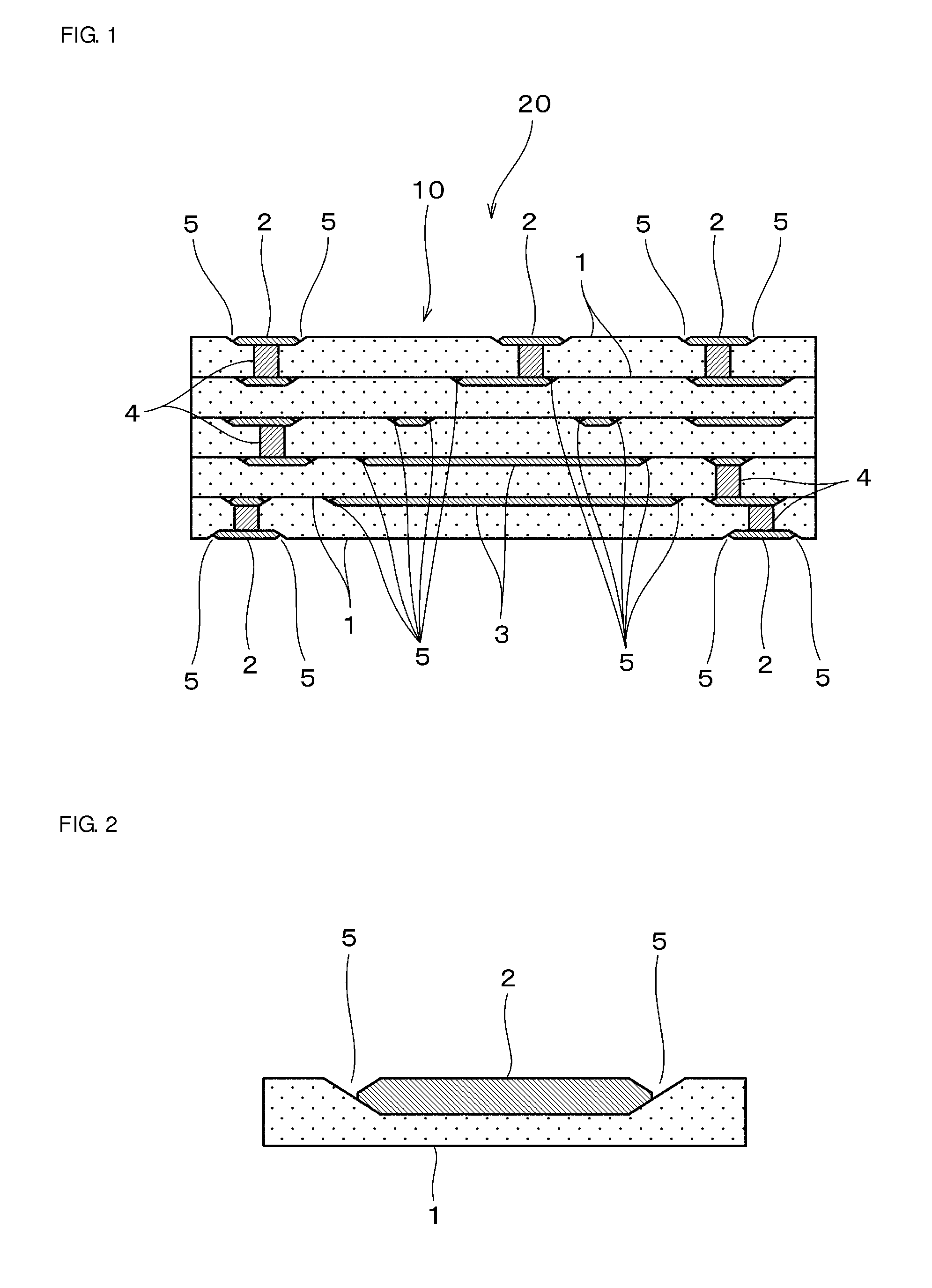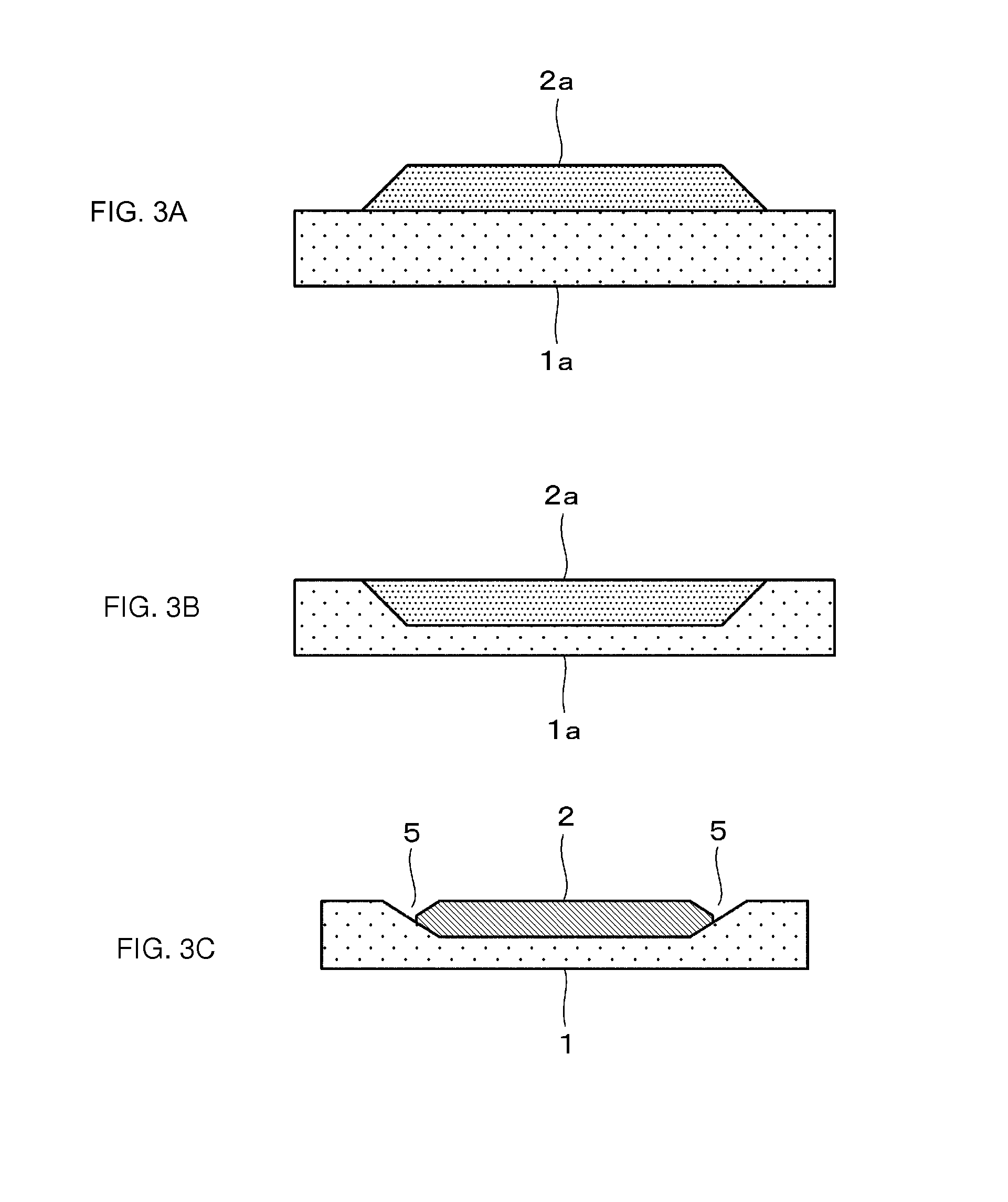Ceramic multilayer substrate and manufacturing method therefor
a multi-layer substrate and ceramic technology, applied in ceramic layered products, transportation and packaging, chemistry apparatus and processes, etc., can solve the problems of difficult to prevent the occurrence of sudden or unavoidable local oozing or spreading of a conductive paste, and high reliability, so as to reduce or prevent the occurrence of short-circuiting, improve the peel strength of surface electrodes, and improve the peel strength
- Summary
- Abstract
- Description
- Claims
- Application Information
AI Technical Summary
Benefits of technology
Problems solved by technology
Method used
Image
Examples
first preferred embodiment
[0034]FIG. 1 is a sectional view schematically illustrating the entire configuration of a ceramic multilayer substrate 20 according to a first preferred embodiment of the present invention. FIG. 2 is a sectional view illustrating a portion of the ceramic multilayer substrate 20.
[0035]The ceramic multilayer substrate 20 according to the first preferred embodiment is a ceramic multilayer substrate which is to be mounted on a mount board. The ceramic multilayer substrate 20 preferably includes a ceramic substrate 10 having a structure in which a plurality of ceramic layers (base ceramic layers) 1 are stacked on each other, surface electrodes 2 disposed on the ceramic layers 1, which define outermost layers of the ceramic substrate, and internal electrodes 3 disposed within predetermined ceramic layers 1. Among the surface electrodes 2 and the internal electrodes 3, predetermined surface electrodes 2 and internal electrodes 3 disposed on different layers are connected to each other by v...
PUM
| Property | Measurement | Unit |
|---|---|---|
| density | aaaaa | aaaaa |
| composition | aaaaa | aaaaa |
| conductive | aaaaa | aaaaa |
Abstract
Description
Claims
Application Information
 Login to View More
Login to View More - R&D
- Intellectual Property
- Life Sciences
- Materials
- Tech Scout
- Unparalleled Data Quality
- Higher Quality Content
- 60% Fewer Hallucinations
Browse by: Latest US Patents, China's latest patents, Technical Efficacy Thesaurus, Application Domain, Technology Topic, Popular Technical Reports.
© 2025 PatSnap. All rights reserved.Legal|Privacy policy|Modern Slavery Act Transparency Statement|Sitemap|About US| Contact US: help@patsnap.com



